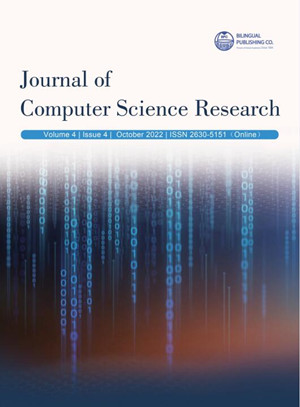
Study, Analysis and Comparison between Amazon A10 and A11 Search Algorithm
DOI:
https://doi.org/10.30564/jcsr.v4i4.5111Abstract
The entirety of Amazon's sales being powered by Amazon Search, one of the leading e-commerce platforms around the globe. As a result, even slight boosts in appropriateness can have a major impact on profits as well as the shopping experience of millions of users. Throughout the beginning, Amazon's product search engine was made up of a number of manually adjusted ranking processes that made use of a limited number of input features. Since that time, a significant amount has transpired. Many people overlook the fact that Amazon is a search engine, and even the biggest one for e-commerce. It is indeed time to begin treating Amazon truly as the top e-commerce search engine across the globe because it currently serves 54% of all product queries. In this paper, the authors have considered two most important Amazon search engine algorithms viz. A10 and A11 and comparative study has been discussed.
Keywords:
Amazon business, Algorithm, Page rank, Visibility, Search engine algorithm, E-commerceReferences
[1] Amazon e-Market Place. Available from: https://www.amazon.com
[2] Amazon Product availability vs other e-commerce website such as flipkart, snapdeal, myntra etc refers to the google search engine. Available from: https://www.google.com
[3] Belsare, S., Patil, S., 2012. Study and Evaluation of user's behaviour in e-commerce Using Data. Research Journal of Recent Sciences. 1(ISC-2011), 375-387.
[4] Algorithm study of Amazon A9 and Amazon A10; 2022.
[5] Sorokina, D., Cantú-Paz, E., 2016. Amazon Search: The Joy of Ranking Products, SIGIR' 16 July 17-21, 2016, Pisa, Italy c 2016 Copyright held by the owner/ author(s). DOI: http://dx.doi.org/10.1145/2911451.2926725
[6] Sullivan, D., 2002. How search engines work. SEARCH ENGINE Watch.
[7] Cho, J., Roy, S., 2004. Impact of search engines on page popularity. Proceeding 13th International conference on World Wide Web. 20-29.
[8] Seymour, T., Frantsvog, D., Kumar, S., 2011. History of search engines. International Journal of Management & Information Systems. 15(4), 47-58.
[9] Maitra, S., Sahoo, L., Tiwary, K.S., 2022. Methods and Strategies for search engine Optimization. COJ Rob Artificial Intel. 2(2), 1-7.
[10] Robertson, S., 2019. A Brief History of Search Results Ranking. IEEE Annals of the History of Computing. 41, 22-28.
[11] Green, E.A., Markey, K.L., Kreider, M., 2016. Subject matter context search engine. Google Patents.
[12] Luh, C.J., Yang, S.A., Huang, T.L.D., 2016. Estimating Google's search engine ranking function from a search engine optimization perspective. Online Information Review. 40(2), 1-29.
[13] Shahzad, A., Nawi, N.M., Hamid, N.A., et al., 2017. The Impact of Search Engine Optimization on The Visibility of Research Paper and Citations. International Journal of Informatics Visualization. 1(4-2), 195-198.
[14] Raorane, A.A., Kulkarni, R.V., 2012. Association Rule – Extracting Knowledge Using Market Basket Analysis. Research Journal of Recent Sciences. 1(2), 19-27.
[15] Bhandari, R.S., Bansal, A., 2018. Impact of Search engine optimization as a marketing Tool. Jindal Journal of Business research. 7(1), 24-36.
[16] Poongkode, J.P.S., Nirosha, V., 2014. A Study on Various Search Engine Optimization Techniques. International Journal of Innovative Research in Computer and Communication Engineering. 2(11), 6738-6742.
Downloads
How to Cite
Issue
Article Type
License
Copyright © 2022 Author(s)

This is an open access article under the Creative Commons Attribution-NonCommercial 4.0 International (CC BY-NC 4.0) License.




 Subhradeep Maitra
Subhradeep Maitra






